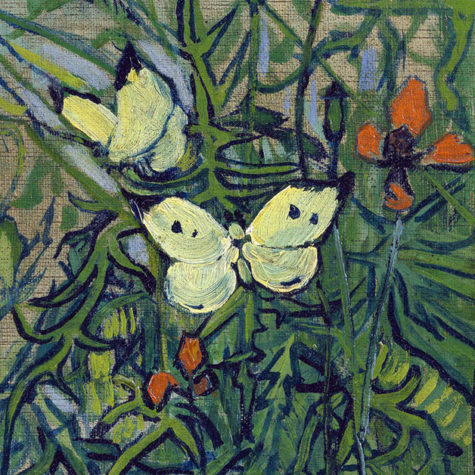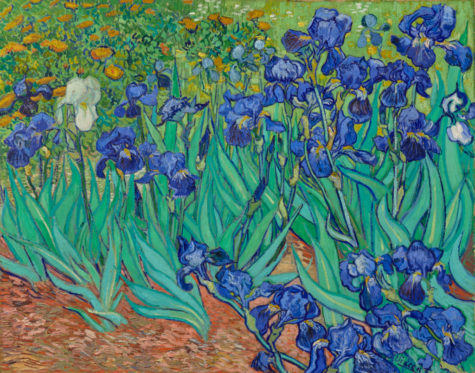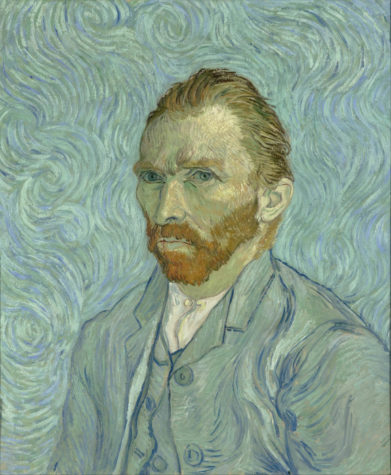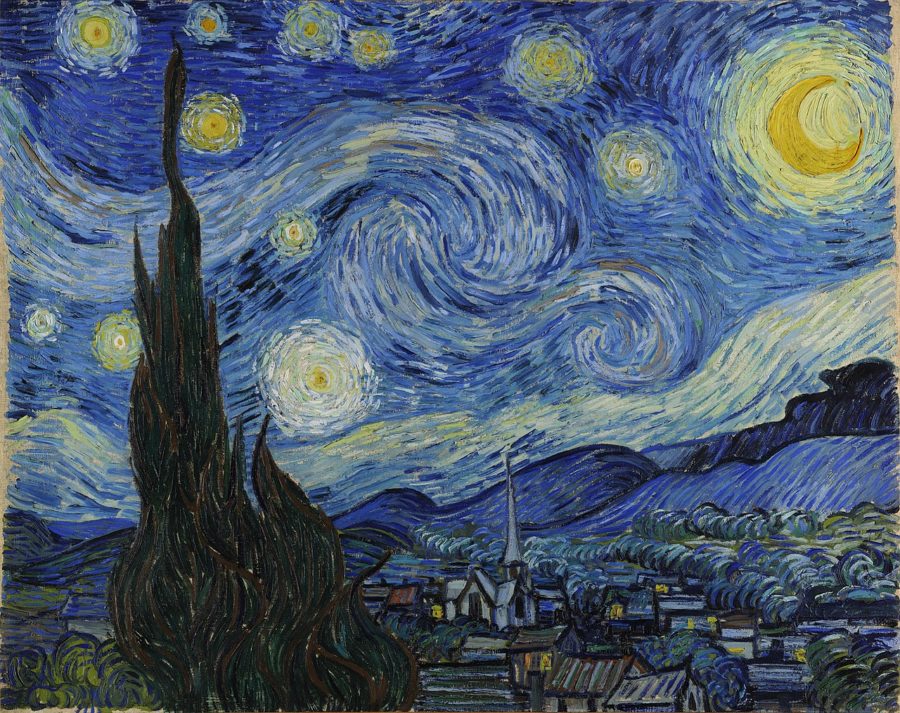Vincent van Gogh
September 5, 2019
What do you think you’d see if you looked out of your window late at night? Perhaps you would see the stars glow in the sky as though they’re melting. Maybe a village nestled below with a cathedral towering up from the center. Beyond that village, you might see hills gently rolling off to meet the horizon.
This was Vincent van Gogh’s view from the Saint-Rémy-de-Provence Asylum in May of 1889, where he was admitted after an incident where he consciously cut off his ear in a fit of rage. He painted the scene a month later in June, and it was titled The Starry Night. Van Gogh had painted many other beautiful paintings in the asylum, such as Irises and Poppies and Butterflies.

This is mostly how the later years of his life followed. Originally planning to become a minister, van Gogh had been denied to do so after refusing to take Latin exams. This happened again, and Van Gogh presently gave up on his ambition.
Shortly, in the Fall of 1880, he ultimately decided to become an artist situated in Brussels, Belgium. With no prior training, he taught himself from books and relied on funds from his family to keep him supported financially. Vincent’s brother, Theo, even sold some of his brother’s paintings to any individual who would buy them.
However, van Gogh’s style wasn’t particularly favored during his time. Van Gogh painted using a variety: Pointillism, Japonisim, and Realism. Whereas, the fashion of paintings people were more inclined to buy were that of the Impressionism variety. Because of this, his art was seldomly well-received. Critics called him a “madman” and “insane,” among other nasty criticisms that the public addressed. This had thrown van Gogh into a depression that made him discouraged about his painting skills. Although van Gogh was being supported by his family, he still lived below the poverty line, when he resorted to burn his paintings in the winter to keep warm.

Theo eventually became worried about his brother’s mental health, and sent Paul Gauguin to watch over Vincent. Paul and van Gogh argued constantly, and on the 23rd of December, their arguing led to van Gogh cutting off his ear. That leads us to July of 1890 where on the 27th morning after he had interpreted his brother’s words, van Gogh shot himself in the chest. Van Gogh survived for two more days which he spent talking to Theo until his demise at the age of 37.
Today, van Gogh is regarded as one of the greatest artists in history. Most famously recognized for his paintings like The Starry Night, and his Still Life With Bible. His story, however, is just as compelling. A failed minister who discovered solace and talent in painting was simply born in the wrong time. A man who had poor mental health reflected his sadness in the melancholy of his paintings.

Vincent van Gogh’s story is agonizingly real and bare. It conveys that even the most broken of us could be the most talented.
As van Gogh said, “Enjoy yourself too much rather than too little.”






DEBI PADHI • Aug 26, 2020 at 11:28 pm
Van Gogh has permeated my body, mind and soul since I was young. He is a virtual mentor of sorts to me; whose prodigious work can turn a non-believer to a believer, s novice to a professional, a meaninglessness to a meaningfulness, a want of love to a lover of wants and a wanderer to a philosopher.
2. Van Gogh was gifted in more ways than one. He longed to be heard, to be spoken to, to be loved and above all to be set free to pursue his beliefs.
3. He was more than successful, may not be in the commercial sense, but in enlightening humanity of it’s frailties and in bringing life closer to living.
4. I often wonder, which seminal work of his is better than the other: his etherial paintings or his poignant letters to his younger brother, Theo…perhaps both transcended the realms of human values, beliefs and existence.
5. Wasn’t Van Gogh an ordained being, sent to Earth to summate life in 37 years!
Jerry Keogh • Aug 14, 2020 at 10:39 am
I bought a painting in Germany many years ago. When i opened the back of the picture there was a van gogh print at the back of the picture Wheat Field with Cypresses..on the border of the print it said collectors item one of six prints can this be true
Joshua Park • Oct 3, 2019 at 8:24 am
God, I freaking love the dedication and passion that goes into this. I really hope this series goes far.
jswander • Sep 5, 2019 at 2:36 pm
Thanks for a fresh perspective on a classic artist! I really enjoyed your closing statements (including the quote); they sum things up quite well!